Redefining Urbanity with international transport system
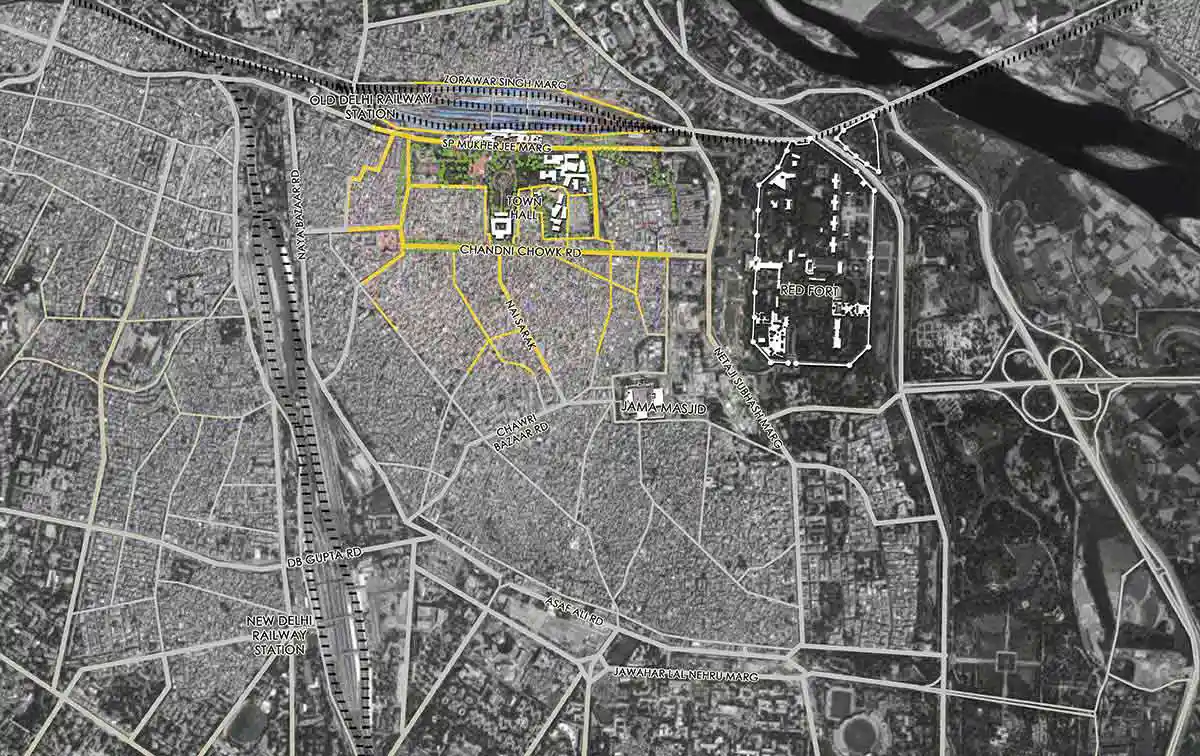 Google Map of Chandni Chowk
Google Map of Chandni ChowkCreative Group presents a new vision for Chandni Chowk (a very congested area in Old Delhi) with re-planned interconnectivity, intermodality, and green spaces, that release the current stress above the ground and create opportunities to restore the lost breathability.
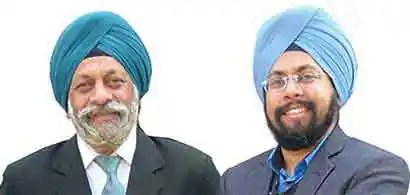 Prof. Charanjit Singh Shah, Founding Principal, & Ar. Gurpreet Shah, Principal Architect, Creative Group
Prof. Charanjit Singh Shah, Founding Principal, & Ar. Gurpreet Shah, Principal Architect, Creative GroupThere is a continual dialectic between the habitat and nature, the inside and outside, ethics and resources. It is not possible to segregate different constituents of built environment which are all interconnected by a central, intelligent nervous system and five senses; there is a haphazard growth in built masses which are not only disturbing the city habitat but also increasing the gap of man and nature. The fascination of smart cities lies in the interplay between the infinite ideas and limited resources which include light, sun, air, rain, climate, nature, building materials, budget and time.
Unlike mass produced matchbox towers or rubber stamped, faceless apartment blocks, the purpose of a design is to give a personal touch and an identity to the space. The recent trends in design indicate a search for emotional and human relationship with the space and the built environment. The human relationship is not just physical, but also in terms of psychological and emotional, which are completely lost in the construction taking place in India and perhaps globally as well. The roots are being lost and the socio–cultural touch is neglected in the name of global intervention.
Mass produced objects insensitize the people into forgetting that there is something beyond the tangible and material aspects of design. Quite often, inspite of meeting all the functional requirements, using most modern techniques, materials and workmanship standards, the urban form or the building is uninspiring, lifeless and devoid of feelings. Human consciousness and emotions are amorphous and ambiguous. A designer has to search for the relationship between consciousness and space. He has to create a living space which is emotionally responsive. This involves a new understanding and expression in terms of design. Space should interact with the user in terms of creating a dialogue, giving sense of freedom, an opportunity for exploration, to allow one to imagine, and clear the uncertainties of routine life.
The compartmentalized view has to be replaced by a holistic and interdisciplinary approach towards creating a smart, sustainable, equitable and aesthetic built environment. This requires application of theory and ideology by way of creative and lateral thinking. The dreams, fantasies and innovations need to be translated into design which responds to human, financial, socio–cultural and environmental contexts. The cities need to connect more closely with the realms of ecology, technology, economics, management and humanities. A sense of interdependence can break down the rigid boundaries and make the plans and designs more human-centric, value based, and relevant to cultural and environment context.
Unfortunately, the current planning concerns in India and abroad ignore this folly and facilely move on to many fashionable titles for human settlements in urban areas such as “smart” cities; “sustainable” cities, etc. We define a “Smart City” as a city which uses information and communication technologies so that its critical infrastructure as well as its components and public services provided are more interactive and efficient to enable the citizens to be acutely aware of them and the sustainable aspects gets ignored.
To us, it strikes as a planning aberration because it covertly makes man the means to let machines grow to acquire unwieldly proportions so that cities become abominations of technological advancements rather than poetic metaphors of human creativity. In the rollercoaster thrill of giddy tumble from novelty we lose all sense of humanity as the essence of man. After all what do we gain with an enormously speedy communication when it lacks, or worse discourages, “communion” of lovelorn souls? The tragic loss of this staple diet of souls we compulsively create, and then to compensate it, unwittingly produce, at the mischievous diktat of MNCs, hordes of eccentric entertainments to numb our senses to be pretending to remain sane in a safe and sound environment.
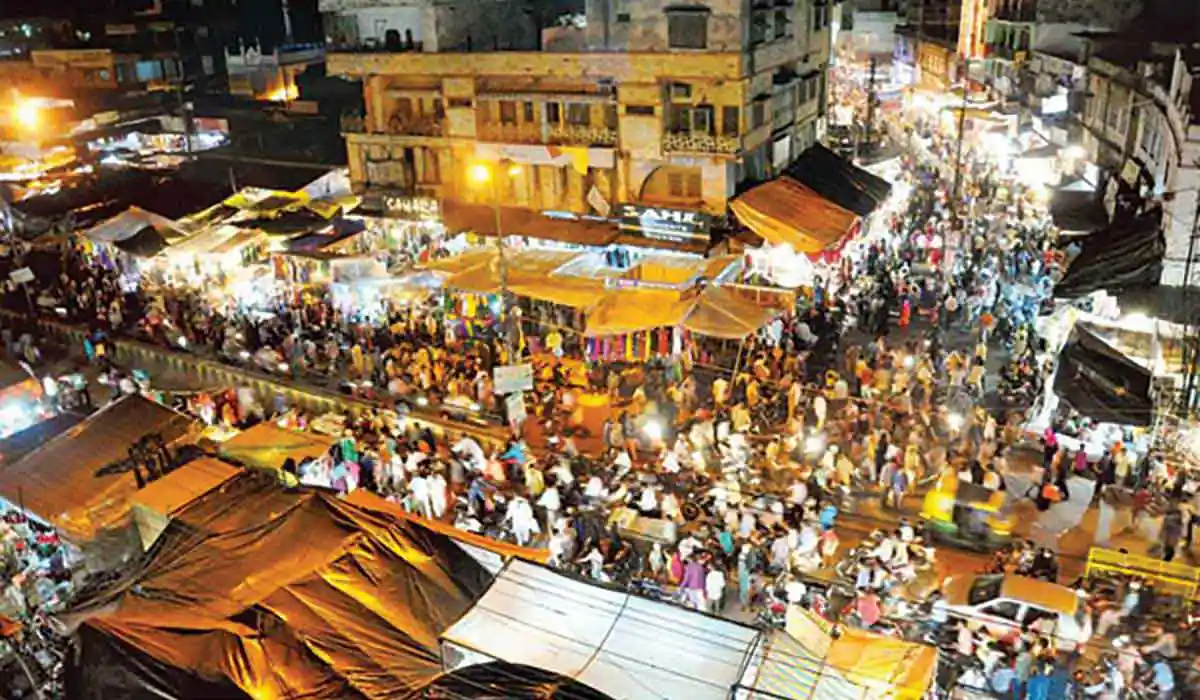 Present day scenario of Chandni Chowk
Present day scenario of Chandni ChowkThis involves a synergy of three dimensions – a horizontal dimension of technical knowledge, hard skills, and a vertical dimension of soft skills – arts, aesthetics, ecology and humanities, and a third dimension of tools, processes, methods and values.
The sustainability essentially means an integrated approach to design that includes urban form and structure, conservation of natural resources (land, water, forest, etc.), site planning, building design, micro – climate design, natural ventilation and day lighting maximizing, greenery on the site, choosing appropriate building resources and construction systems, energy and water conservation techniques, infrastructure response, including transport, fuels, pollution control, waste management etc.
We need to start the discussion and action with an assessment of people’s access to basic services such as accessible portable water supply, sewerage systems, solid waste collection, storm water drainage systems, streetlights, paved roads and footpaths. There is a need to come up with basic infrastructural requirements and marking on the map where they exist and don’t exist, and to find crisis management strategies to intervene.
 Chaotic roads with no segregation of pedestrian and vehicular movement
Chaotic roads with no segregation of pedestrian and vehicular movementChandni Chowk Reformation
With an example of Chandni Chowk reformation, re-planning done in terms of interconnectivity, intermodality and green breathing public spaces is illustrated:
Old Delhi, traditionally called “Purani Dilli” and historically “Shahjahanabad- the Walled city”, holds a deep rooted history and heritage that showcases the richness in the socio-economic, cultural and architectural grounds ever since the Mughal Dynasty that ruled Delhi, to the invasions of British Colonial trajectories. Chandni Chowk was and still is renowned for being one of the largest undying wholesale markets in India.
Falling in a closed circuit with the Red Fort, Jama Masjid, Fatehpuri Masjid, Railway Station, Mahatma Gandhi Park and Chawri Bazaar, Chandni Chowk advocates responsibility, being the crucial area of connectivity to both the stagnant as well as floating population. It has sadly reached a point where the Chowk is abused by human interventions, predominantly vehicular and unorganized pedestrian possessions at the peak hours. In addition to the thick and dense floating population, the most important factor is the air pollution, which has been hitting the headlines very frequently alongside water and noise pollution.
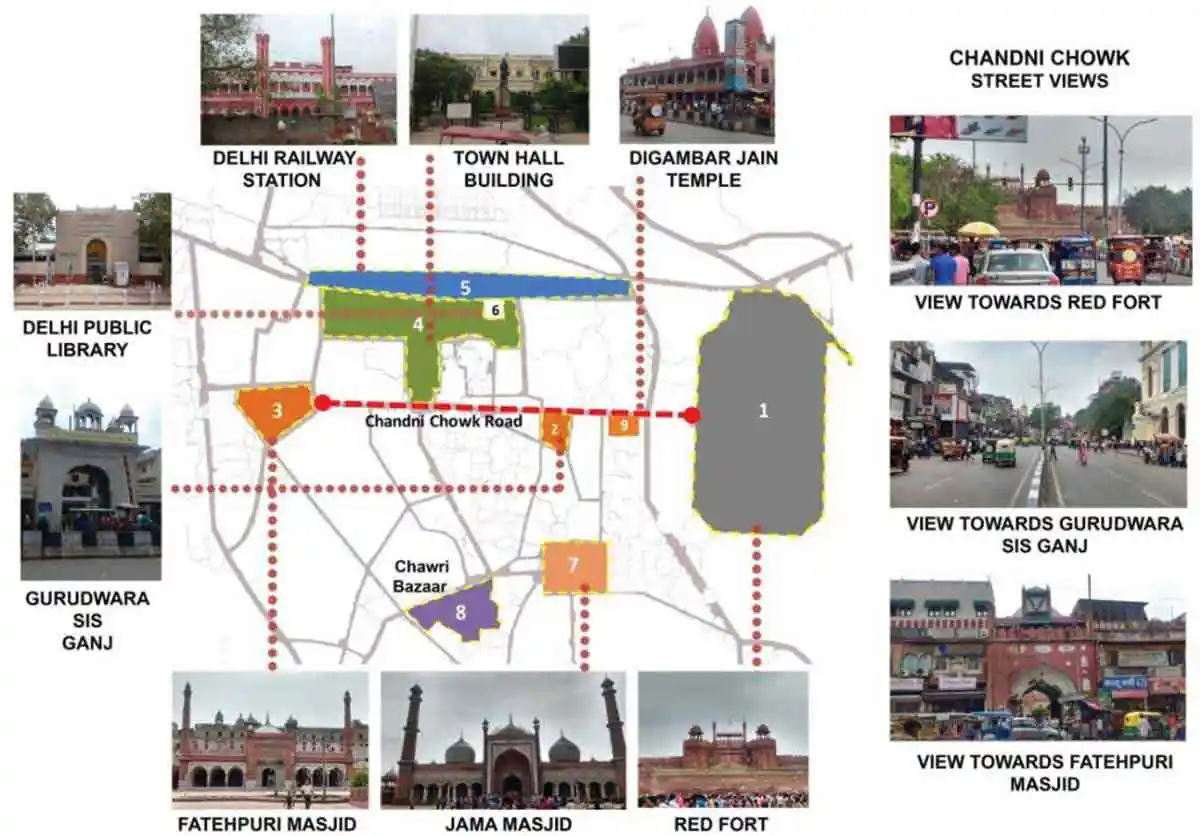 Chandni Chowk with important landmark buildings
Chandni Chowk with important landmark buildingsUnderstanding the complexity of the urban fabric, infrastructural morale, day-to-day surge in population and the organic functioning of Chandi Chowk, we, at Creative Group, have come up with substantially feasible intermodal transport system with technologically advanced methods. The metro system that connects Chandni Chowk with Kashmiri Gate and Chawri Bazaar runs underground
Additionally, properly furnished pedestrian paths could be laid, which regularizes the current pedestrian congestion and eases the flow in walkability. There is an irrefutably important need to consider ease in vehicular movement to relieve the pressure mounting on the national capital with regard to uncontrolled pollution. Unorganized parking practices are envisioned to be bifurcated into two parts as passer vehicles and stationary (parked) vehicles. Vehicular traffic and stagnation create a lot of ruckus in the city during peak hours. Hence, in this case, buses, cars and two wheelers could be taken further below the ground level, thereby creating breathing spaces in the city. Once vehicles go underground, the lungs of the city are comforted with the creation of open green spaces.
 The proposed section for underground intermodality in Chandni Chowk
The proposed section for underground intermodality in Chandni Chowk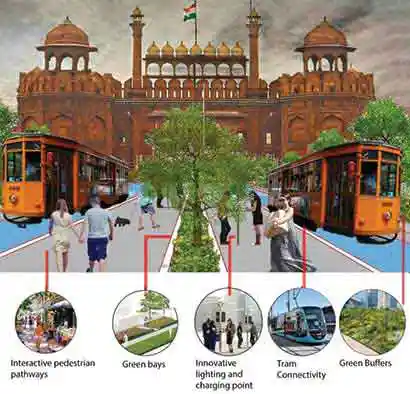 Creating pollution free, open green breathing spaces
Creating pollution free, open green breathing spacesThe complex intermodal transport system is redefined by foreseeing future below the ground. Skywalks are also considerable methods to improve the internal circulation amongst the markets and other stop points. Reintroduction of trams, one of the greatest heritage of the Walled City and the most economical modes of transport system, which perished decades ago, could nourish the splendor of Delhi. Separate tracks are proposed to be laid along with the pedestrian pathways above the ground level for the trams to run around Chandni Chowk, connecting important nodes. Apart from these proposals, the concept of last mile connectivity with rapid underground intermodality is envisioned to connect important destinations in and around Chandni Chowk.
The urban pressure due to population, demand of various modes of transportation has developed into over layering of cities with flyovers, overhead metro and foot over bridges with multimodal transportation layers resulting in overshadowing the living spaces and in creating the most polluted cities of the world. Sadly, the PM (particulate Matter) 2.5 PM 10 has risen to alarming levels and the citizens have become passive smokers, smoking more than 20 cigarettes a day.
“A building should not be treated as a mass of brick and concrete but as a living organism which breathes and embodies with nature.”
Prof. Charanjit Singh Shah
The earlier we realize that it is better to redefine our cities and provide human spaces and create cities for people to live than have cars and vehicles to move around. Last mile connectivity is very important to create walkable and cycle-able green cities of tomorrow. Having a great history and heritage with ethnic considerations, Indian cities which were still breathing with fresh air are now turned into toxic gas chambers, polluted air, sound and water pollution which needs to be dynamically looked into for reforms.
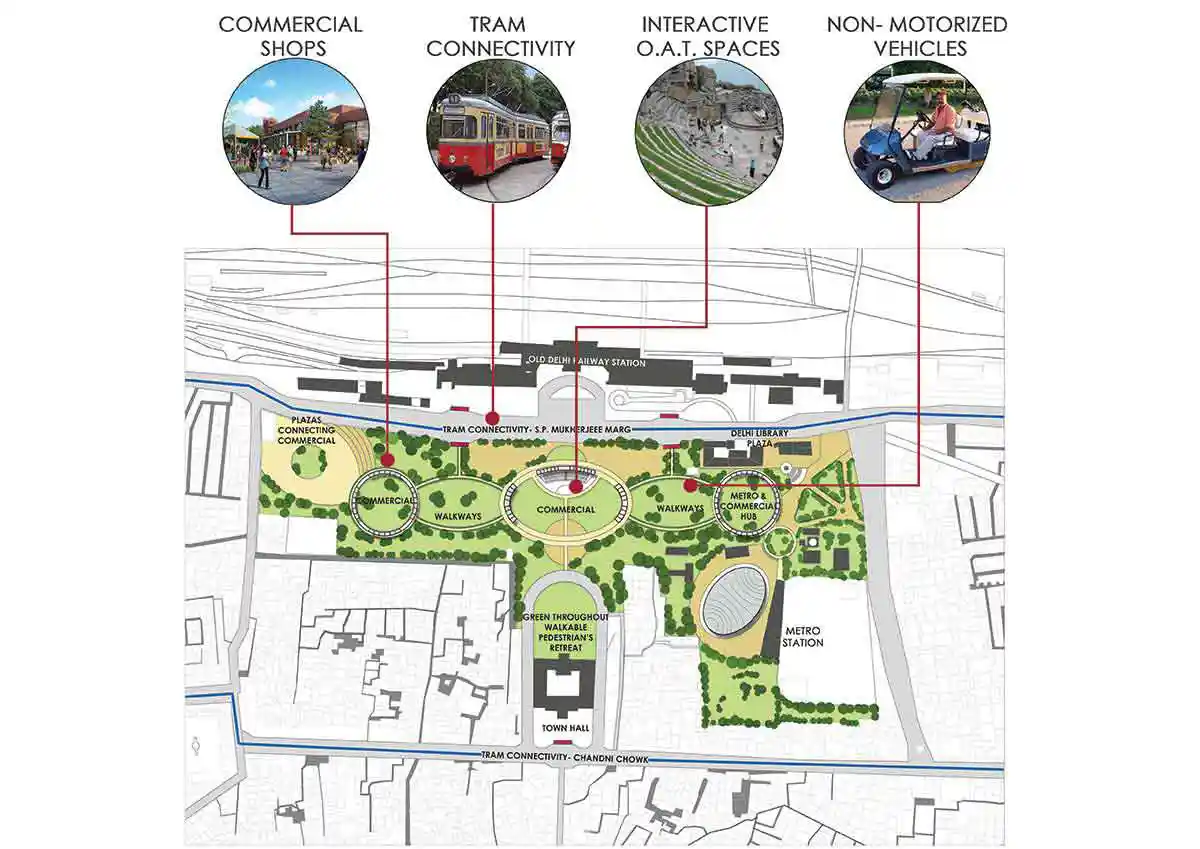
The directive principle of our national urban planning policy should be to ruralize our cities rather than urbanize our villages. This approach would ensure that our centuries–old culture is kept vibrantly alive; Providing urban facilities in rural fabric should be the concern. Our national trait is rusticity, not sophistication, that remains rooted in our ‘Collective
Unconscious’ as a living tradition of humaneness, compassion, camaraderie, and informal lifestyle, sustained by undiminishing love of Mother Nature!
NBM&CW August 2019


















